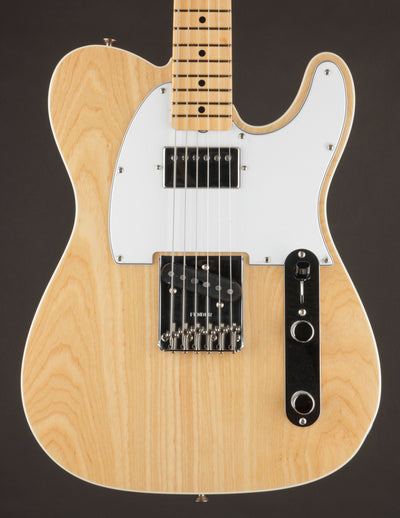If you're a fan of early Guild guitars like we are, then there's a strong chance you're aware of how great they can be... especially at their price point! Beyond their great value, still, one will occasionally come along and really wow us. This is one of those guitars...
This early 1965 Guild Starfire II model in Cherry finish was stowed away in a closet uncased for decades by its prior owner, and while it doesn't carry the often over-used "closet queen" designation, its tone and feel will overshadow any deficiencies in the condition department. It's worth calling attention to fact that this SFII likely began production in late '64 due to its lack of neck volute, which Guild started incorporating in their builds in 1965.
At just 5 3/4 lbs, it's a supremely lightweight Starfire. These thinline hollowbodies are generally light guitars by their very nature, but when they're south of 6lbs, you take notice. Combined with a fantastic full C neck (we're talking late 50s Gibson depth, without the fat taper), it's got unusually powerful amount of acoustic volume. It makes the guitar a real treat to play unplugged - a huge added benefit of a great hollowbody electric.
Where this Starfire II starts to separate itself from the pack is in the pickups. The original mini humbuckers are wound considerably hotter than what you'l typically find. Most of these pickups register in the low to mid 6k range for DC resistance. The pickups in this guitar come in at 8k and 7.3k, respectively, and you can hear the difference. Beyond the obvious bump in output, their fundamental crispness and attack are accentuated. Fullness with no mud in the neck position, plenty of clarity and bite in the bridge position, and the sweetest and chimiest of in-between tones in the middle position. What more could you want!?
The guitar was just recently refretted with Jescar 47095 fretwire and set up with 11-49 strings, and it's playing fabulously! It's otherwise completely original- finish, hardware, electronics, and plastics. It has some finish wear on the back of the body near the treble-side horn where some some textile/material made prolonged contact with it and transferred to the lacquer. A similar thing happened on the back of the neck, and both areas have been cleaned up a bit. There's also a small and tight headstock crack present that presents as very stable, with no current need for attention.
If you want an inspiring and powerful vintage electric hollowbody and don't mind the wear, bumps, and bruises, it'd be hard to find a better valued guitar than this.

Body
Hardware
Neck
Other

































